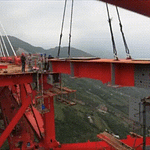Full transcript of the audio follows, if you’d prefer to read:
“If you haven’t already, I’d suggest you listen to the previous episode, “Structure Done Right: When Waterfall is your Greatest ally,” before this one. It’s linked in the show notes for your convenience, but here's a high-level recap: Waterfall’s structured approach keeps everything on track, ensuring no details are overlooked as you move toward the big day.
Like any tool, Waterfall delivers the best results when you know how to use it effectively. Whether you’re managing a massive corporate project or planning something personal, here are some strategies to make Waterfall work for you.
You must start with Detailed Planning.
Waterfall lives and dies by its upfront planning phase. The more effort you put into defining your project’s requirements, scope, and deliverables, the smoother the rest of the process will be.
Sit down with stakeholders and gather as much information as possible about the project’s goals, constraints, and expectations. Develop a detailed project plan that outlines every phase, task, timeline, and resource needed. Leave no stone unturned. Waterfall works best when the requirements are crystal clear from the start.
Pro Tip: The more comprehensive your planning, the fewer surprises you’ll face later. This is the time to address potential risks and clarify assumptions.
In Waterfall, each phase builds on the one before it. This makes clear communication between teams and stakeholders absolutely essential.
Hold regular progress meetings at the end of each phase to ensure alignment before moving forward.
Document decisions and share updates with all relevant parties, leaving no room for misinterpretation.
Use clear handoffs between phases. For example, the design team should provide a detailed handover to the implementation team, including any constraints or assumptions.
Imagine a corporate relocation project. The facilities team designs the new office layout, and the implementation team is tasked with setting up the space. Clear communication ensures that the design aligns with what the movers and IT teams need to execute successfully.
Don’t assume that silence means everyone’s on the same page. Actively confirm understanding and agreement at every phase transition.
Even though Waterfall thrives on structure, life is rarely as predictable as we’d like. Building in contingency plans can help you mitigate risks and keep the project on track.
Identify potential risks during the planning phase and create contingency plans for them.
Allocate buffer time in your schedule for unexpected delays.
Set aside a contingency budget to handle unforeseen expenses.
One of Waterfall’s biggest weaknesses is the delayed feedback cycle, but you can mitigate this by finding ways to validate your work earlier in the process.
You can mitigate this by Incorporating informal testing or reviews during the implementation phase.
Use prototypes or mockups to gather feedback before the testing phase officially begins.
Encourage stakeholders to review deliverables at the end of each phase to ensure alignment.
Waterfall is all about adhering to the plan—but that doesn’t mean being inflexible in the face of new information. The key is knowing when a change is worth the effort and when to stay the course.
Executing a Waterfall project successfully comes down to a few core principles:
Plan thoroughly and leave no gaps in your requirements.
Communicate constantly to ensure alignment between teams and stakeholders.
Build contingency plans to handle the unexpected without disrupting progress.
Test your work as early as possible to avoid costly fixes later.
And Stick to the plan—but stay open to calculated changes when necessary.
When executed correctly, Waterfall is a powerhouse methodology that delivers reliable results. It’s not flashy, it’s not trendy, but it gets the job done with precision and predictability.
Let’s take a deep dive into an imaginary corporate office relocation project. It’s the kind of undertaking where Waterfall really shines—fixed scope, clear phases, and minimal room for change.
You’re the project manager tasked with moving a company from its old office to a brand-new location. The project involves multiple stakeholders, a hard deadline, and a million moving parts. It’s a high-stakes operation, and your job is to ensure everything runs smoothly without disrupting business operations.
Here’s how Waterfall guides you through each phase of the relocation:
Phase 1: Requirements Gathering.
This is the foundation of your project. Before any action takes place, you gather all the information you need to define the scope and objectives of the move.
What Happens Here:
Meet with stakeholders to identify needs: How much space is required? What’s the budget? What’s the timeline?
Document all requirements, such as the number of workstations, conference rooms, and IT infrastructure needed.
Determine critical factors like the moving date, the new office layout, and compliance with building codes or regulations.
The deliverable would likely be a comprehensive requirements document that outlines everything the project needs to achieve. For example, “The new office must accommodate 200 employees, include 10 meeting rooms, and have a fully operational IT setup by June 1.”
Phase 2.
With the requirements locked in, it’s time to create the blueprint for the move. This phase is all about planning and preparing for execution. In this phase you would:
Collaborate with architects and designers to finalize the new office layout, including furniture placement, electrical wiring, and workspace zones.
Work with the IT team to plan the setup of networks, servers, and equipment.
Create a detailed move schedule, breaking down tasks like packing, transportation, and setup.
Identify and hire vendors, such as movers and furniture suppliers.
At the end of this phase, the deliverable would be a detailed project plan that includes timelines, vendor contracts, and the finalized design of the new office.
And onto Phase 3, Implementation.
This is where the rubber meets the road, and all the preparation from the earlier phases comes to life. And this entails: Coordinating the packing of all office equipment and furniture, Overseeing the transportation of materials to the new location, supervise vendors as they set up workstations, install IT systems, and configure phone lines, and ensuring that everything aligns with the design plan and meets the documented requirements.
This phase would involve on-the-ground problem-solving. For example, if a piece of furniture doesn’t fit in the new space as planned, you’ll need to make quick adjustments without disrupting the timeline. The deliverable for this would be that the physical move is completed, and the office is fully set up for the team to begin working.
Phase 4: Before employees officially move in, it’s time to test everything to make sure it works as planned. This involves conducting a walkthrough of the office to ensure that furniture and equipment are correctly placed, testing IT systems, including network connectivity, printers, and telecommunication lines, and validating that the new office complies with safety standards, such as fire exits and building codes. Your Deliverable here is a fully functional, move-in-ready office. Any final adjustments, such as reconfiguring a conference room or tweaking IT setups, are made at this stage.
And finally phase 5. It’s time for the big day—the team moves into the new office, and the project officially wraps up. As the Project Manager you would be responsible for coordinating the move-in schedule to ensure employees settle in smoothly, providing orientation for the new office layout, including how to use shared equipment like printers or AV systems, and gathering feedback from employees to identify any final adjustments needed, like ergonomic desk setups or additional power outlets.
And the deliverable here is a completed project with employees happily working in their new space, meeting all the initial requirements.
This corporate office relocation is the perfect example of why Waterfall excels in certain scenarios:
The requirements were clear from the start—move 200 employees into a functional office by a specific date. Also, each phase had to be completed before moving to the next. For instance, you couldn’t implement the move until the design and vendor contracts were finalized.
Any mistakes—like missing the move-in date or failing to set up IT systems—could have disrupted the company’s operations. Waterfall’s structured approach ensured nothing fell through the cracks. Every decision, from layout designs to vendor agreements, would have been documented. This ensured accountability and provided a clear trail for resolving any disputes or issues.
By sticking to its sequential phases, focusing on detailed planning, and executing with precision, you can deliver reliable results—even when the pressure’s on. So, the next time you’re tackling a project that demands stability and structure, give Waterfall a try—you might just find it’s the steady hand your team needs.”












Share this post